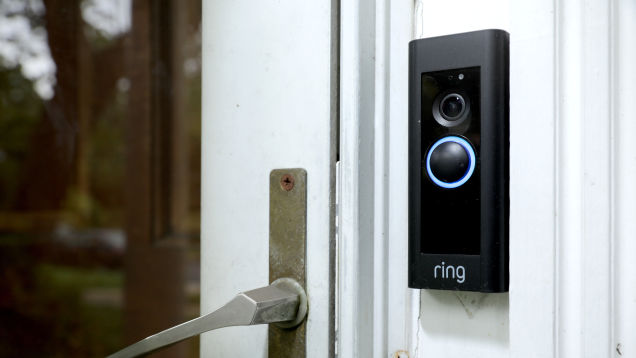In 2015, the Eyüpsultan Municipality in Istanbul, Turkey, began a bold migration to adopting open source software. This involved several major changes: Linux on the desktop and major changes to the IT infrastructure, including a transition to the Zimbra email server and the PostgreSQL database.read more
Source: LXer – How a local government migrated to open source
Monthly Archives: August 2020
Bash Beginner Series #9: Using Functions in Bash
Never rewrite code, use functions instead!
Source: LXer – Bash Beginner Series #9: Using Functions in Bash
Toshiba Updates Canvio Portable Storage Lineup with Flex and Gaming HDDs
Hard disk drives still rule the roost when dealing with bus-powered portable storage devices that are economical on a $/Gb basis, particularly at higher capacity points. Seagate and Western Digital offer capacities ranging from 1TB to 5TB in their Portable / Backup Plus and My Passport HDD lineups. Toshiba’s bus-powered Canvio lineup includes the Canvio Slim (1TB and 2TB), Canvio Advance, Canvio Basics, and Canvio Ready (1TB-4TB) models. Today, Toshiba is adding new models focused on the gaming market (add-on storage for consoles) while expanding cross-platform compatibility. The Advance and Ready models are also getting a redesigned exterior.
The two new models – Canvio Flex and Canvio Gaming – target different market segments. Both feature storage capacities of up to 4TB, and utilize shingled magnetic recording (SMR) technology. They come with a USB 3.2 Gen 1 (5 Gbps) Micro-B interface. The Flex comes with both USB-C and USB-A cables for wider compatibility with a range of computing platforms. The Gaming model features customized firmware (with an ‘Always-On’ feature, which we assume disables the parking of the heads when idle as long as power is available).
Toshiba expects the new Canvio Flex and Gaming models to become available in Fall 2020. Pricing was not available at launch time – the 4TB Basics / Advance currently have a street price around $90-$100, and we expect the Flex and Gaming to land around that. In terms of competition, both Seagate and Western Digital have had their 4TB (and even 5TB) bus-powered SMR models in the market for a few years, though the performance profile is widely different. We would have liked Toshiba to introduce a 5TB model to go against the entire stack from their competitors. That said, the new models do enable the company to tweak the firmware and accessories to serve specific market segments in a better manner.
Source: AnandTech – Toshiba Updates Canvio Portable Storage Lineup with Flex and Gaming HDDs
Andrew Yang Takes Lead Role In California Data Privacy Campaign
Former presidential candidate Andrew Yang is throwing his weight behind California’s November data privacy ballot measure — not just endorsing the initiative but chairing its advisory board, the Proposition 24 campaign announced Monday. Politico reports: Yang’s involvement could bring more visibility and cachet to the effort, given the tech entrepreneur’s national profile and popularity among younger voters. It could also help counter the negative messaging from some consumer and civil rights groups that are opposing it. Yang lives in New York, thousands of miles from where voters will cast their ballots in November. But the initiative, like the law it would rewrite, could be the nation’s de facto privacy law in the absence of federal action.
Prop. 24 would rewrite parts of the California Consumer Privacy Act, which gave Californians new rights over their personal data when it took effect in January. The new measure would create a regulatory agency to manage California’s privacy regime, add protections for “sensitive data,” and eliminate the 30-day window that companies now have to correct problems before the attorney general can take them to court. It also would make it harder for the Legislature to roll back its protections in the future; any changes would need to further the law’s aims. Alastair Mactaggart, a Bay Area real estate developer whose 2018 initiative compelled the Legislature to pass the CCPA that year, is behind the effort to amend it. “The California Consumer Privacy Act was a major win for the state of California and the country, but we have to do more,” says Yang. “Technology is changing more rapidly than ever before, and tech corporations are already lining up to undermine the CCPA. It’s up to us to protect consumers and strengthen our privacy rights to global standards. Our data should be ours no matter what platforms and apps we use. That’s why I hope California voters will join me in supporting Prop 24 by voting YES in November.”
Read more of this story at Slashdot.
Source: Slashdot – Andrew Yang Takes Lead Role In California Data Privacy Campaign
Duh: FBI Warned Doorbell Cams Can Also Tip Suspects Off to Approaching Cops

The FBI warned in a November 2019 bulletin that smart video doorbells, such as Amazon’s Ring or Google’s Nest Hello cameras, could tip off suspects that police are coming for them, according to a Monday report in the Intercept.
Source: Gizmodo – Duh: FBI Warned Doorbell Cams Can Also Tip Suspects Off to Approaching Cops
Digital Assets – cryptocurrencies prices and statistics
Digital Assets is a GUI that lets you monitor movements in the prices of cryptocurrencies. The program is written in Python. Digital Assets uses the Nomics API to retrieve the prices.
Source: LXer – Digital Assets – cryptocurrencies prices and statistics
A Fresh Take On The Legend Of Zelda

Anu Chouhan is an illustrator and character artist from Canada working in the video game business.
Source: Kotaku – A Fresh Take On The Legend Of Zelda
Elon Musk Passes Mark Zuckerberg To Become Third-Richest Person In the World
Elon Musk is now the third-richest person in the world. Musk passed Facebook co-founder Mark Zuckerberg Monday as shares of Tesla continued their unrelenting rally after undergoing a forward stock split. Musk is now worth $115.4 billion compared with $110.8 billion for Zuckerberg. Yahoo Finance reports: Also Monday, Jeff Bezos’s ex-wife MacKenzie Scott became the world’s richest woman, passing L’Oreal SA heiress Francoise Bettencourt Meyers. Scott, 50, who received a 4% stake in Amazon.com Inc. as part of her divorce from founder Bezos, is now worth $66.4 billion. Musk, 49, has seen a meteoric rise in his wealth, with his net worth growing by $87.8 billion this year as Tesla shares surged almost 500%. Also helpful: an audacious pay package — the largest corporate pay deal ever struck between a chief executive officer and a board of directors — that could yield him more than $50 billion if all goals are met. Tesla’s $464 billion market value now exceeds that of retail behemoth Walmart Inc., the largest company in the U.S. by revenue. Last week, Musk joined Zuckerberg, Bezos and Microsoft Corp. co-founder Bill Gates in the rarefied centibillionaire club as tech stocks rose.
Read more of this story at Slashdot.
Source: Slashdot – Elon Musk Passes Mark Zuckerberg To Become Third-Richest Person In the World
Facebook threatens to block all news in Australia
Facebook users in Australia could lose their ability to share news on the social network, the company is warning. The threat is the result of a proposed law from the Australian Competition and Consumer Commission (ACCC) that would require Facebook an…
Source: Engadget – Facebook threatens to block all news in Australia
Counter-Strike Coaches Banned For Up To Two Years For Abusing Spectator Bug

Players get banned for cheating every day, but you know who usually doesn’t get smited from the competitive heavens? Coaches.
Source: Kotaku – Counter-Strike Coaches Banned For Up To Two Years For Abusing Spectator Bug
Twelve Years Later, Apple Is Still Trying To Erase Mac.com Email Addresses
Apple is steadily removing references to the old @mac.com and slightly less old @me.com addresses from its support documents. AppleInsider reports: It used to be that if your email addressed ended in @mac.com, you were telling the world that you are an Apple user. Now while it’s only that part of the world which is extremely geeky, you’re actually telling them that you were an Apple user on or before July 9, 2008. This email address was once championed by Apple as part of its iTools service back in 2000, and if you still have one, you have some bruises from the days of iTools, .Mac, and MobileMe before you got to today’s iCloud. If your email ends in @mac.com then you got it somewhere between 2000 and 2008. If it ends in @me.com, you got it during the briefer opportunity between then and 2012. To be exact, you have still got an @mac.com address because you had it and were actively using it on July 8, 2008, plus you kept your MobileMe account and – there’s more – you moved to iCloud before August 1, 2012.
[…]
Your Apple ID is tied to an email address and Apple gives you some flexibility about this, because it recognizes that we sometimes lose access to a previous address. You can change the address associated with your Apple ID and there’s a current support document about how and why you might do that. For some years, though, that page has said you’re out of luck if you want to change to an @mac.com or @me.com address. You can’t do it unless you somehow already have that address associated with your account. And then in late August 2020, even that helpful information is gone. That same support page still lists what you can do with third-party email addresses. But gone are any references to @mac.com and @me.com.
Read more of this story at Slashdot.
Source: Slashdot – Twelve Years Later, Apple Is Still Trying To Erase Mac.com Email Addresses
How To Configure Networking In Vagrant
This guide explains how to configure networking in Vagrant to provide access to guest machine from the local host system in Linux.
Source: LXer – How To Configure Networking In Vagrant
Intel Still Working To Tune Linux Power Efficiency For CPU Power-Sharing Scenarios
Going back to earlier this year has been work on an “adaptive” mode for P-State to improve GPU bound efficiency when the CPU is forced to share a power/thermal budget with other components like onboard graphics. That work is still advancing and an update was provided on it last week…
Source: Phoronix – Intel Still Working To Tune Linux Power Efficiency For CPU Power-Sharing Scenarios
Twitter makes sure Quote Tweets are just one click away
Twitter’s ever-evolving approach to conversation on its platform has another tweak, as now you’ll see a Quote Tweet button in between the count of Retweets and Likes when you zoom in on a particular tweet. The standardized quote tweet arrived about f…
Source: Engadget – Twitter makes sure Quote Tweets are just one click away
These Horrifying Halloween Decorations Encourage Extreme Social Distancing

It’s not even September yet, but Halloween season is here. It’s been here. Who isn’t ready for spooky festivities to make the real world feel not so glum? Journey with us to Target (of all places) to find the decor that has most embraced 2020’s nightmare vibes, and might just inspire some nightmares of its own.
Source: io9 – These Horrifying Halloween Decorations Encourage Extreme Social Distancing
Facebook and Google Serve As Vectors For Misinformation While Hobbling Local Journalism and Collecting Taxpayer Subsidies, Group Says
An anonymous reader quotes a report from Axios: Facebook and Google are hollowing out local communities by serving as vectors for misinformation while hobbling local journalism and collecting taxpayer subsidies, a new paper from progressive think tank the American Economic Liberties Project charges. Both companies cite benefits their platforms offer small businesses as a key defense against critiques of their size and power. The paper, dated Aug. 30, is sure to presage further scrutiny of the impact they’ve had on local communities.
The brief, by Pat Garofalo, the group’s director of state and local policy, argues that: Google doesn’t do enough to protect against fraud, allowing scammers to get their own numbers and websites listed on Google to the detriment of legitimate businesses. Facebook, by design, boosts shoddy and sensationalist content, crowding out legitimate local news and information, all as it and Google have come to dominate the local advertising market that was long the lifeblood of community journalism. Both have sucked up potentially billions in local taxpayer dollars via tax breaks as well as subsidies and discounts on utilities they’ve gotten in exchange for building data centers. Garofalo recommends remedies including more antitrust enforcement at the federal and state levels and an end to preferential treatment by states and localities, either voluntarily or under force of law.
Read more of this story at Slashdot.
Source: Slashdot – Facebook and Google Serve As Vectors For Misinformation While Hobbling Local Journalism and Collecting Taxpayer Subsidies, Group Says
Waze Drivers, Welcome to the Batmobile

Waze, Google’s driving and traffic app, is letting users drive with Kevin Conroy, the best Batman voice, as their personal navigator beginning today.
Source: io9 – Waze Drivers, Welcome to the Batmobile
Moon Taught Me To Appreciate Its Weird World The Hard Way

Moon: Remix RPG Adventure is a niche “anti-RPG” from 1997 that last week made its way westward, for the first time ever, via Switch. While the digital manual provides some much-appreciated assistance, I recently found myself stuck in a game-ending situation that would have been entirely avoidable had I respected the…
Source: Kotaku – Moon Taught Me To Appreciate Its Weird World The Hard Way
How to Set Up Facial Recognition to Sign into Ubuntu and Other Linux Distributions
Missing the Windows Hello kind of unlocking of your system on Linux? Learn how to set up face unlock on Ubuntu and other Linux distributions.
Source: LXer – How to Set Up Facial Recognition to Sign into Ubuntu and Other Linux Distributions
Qualcomm Doubles 5G mmWave Range To 2.36 Miles For Broadband Modems
As 5G networks have continued to spread across the world, the biggest issue with ultra-fast millimeter wave (mmWave) towers has been their short transmission distance, which is generally measured in city blocks rather than miles. Today, Qualcomm announced a breakthrough in mmWave transmission range, successfully achieving a 5G data connection over a 3.8-kilometer (2.36-mile) distance — over twice the range originally promised by its long-range QTM527 antenna system last year. VentureBeat reports: It’s important to put today’s news into perspective, as the record is specific to broadband modems rather than smartphones. Qualcomm is touting the achievement as evidence of mmWave’s viability as a fixed wireless access solution, enabling carriers to offer fiber-speed 5G coverage in rural, suburban, and urban communities that might have had poor wired home broadband options in the past. The successful test was conducted in Regional Victoria, Australia, presumably with minimal physical interference between the sending and receiving devices. The test relied on two existing Qualcomm hardware solutions — the Snapdragon X55 modem and QTM527 antenna — inside a consumer premises equipment broadband modem, communicating with Ericsson’s Air5121 and Baseband 6630 tower hardware, enhanced by extended-range software. No details were provided on speeds or other details of the connection, but Qualcomm characterized the successful range test as “the first step in utilizing mmWave for an extended-range 5G data transfer,” hinting that there may have been compromises in speed or other areas. The company previously noted that carriers would be able to deliver up to 7Gbps download speeds if the QTM527 could access a full 800MHz of mmWave spectrum. Existing tower hardware has hit 4.3Gbps for a single device or 8.5Gbps for two devices.
Read more of this story at Slashdot.
Source: Slashdot – Qualcomm Doubles 5G mmWave Range To 2.36 Miles For Broadband Modems

